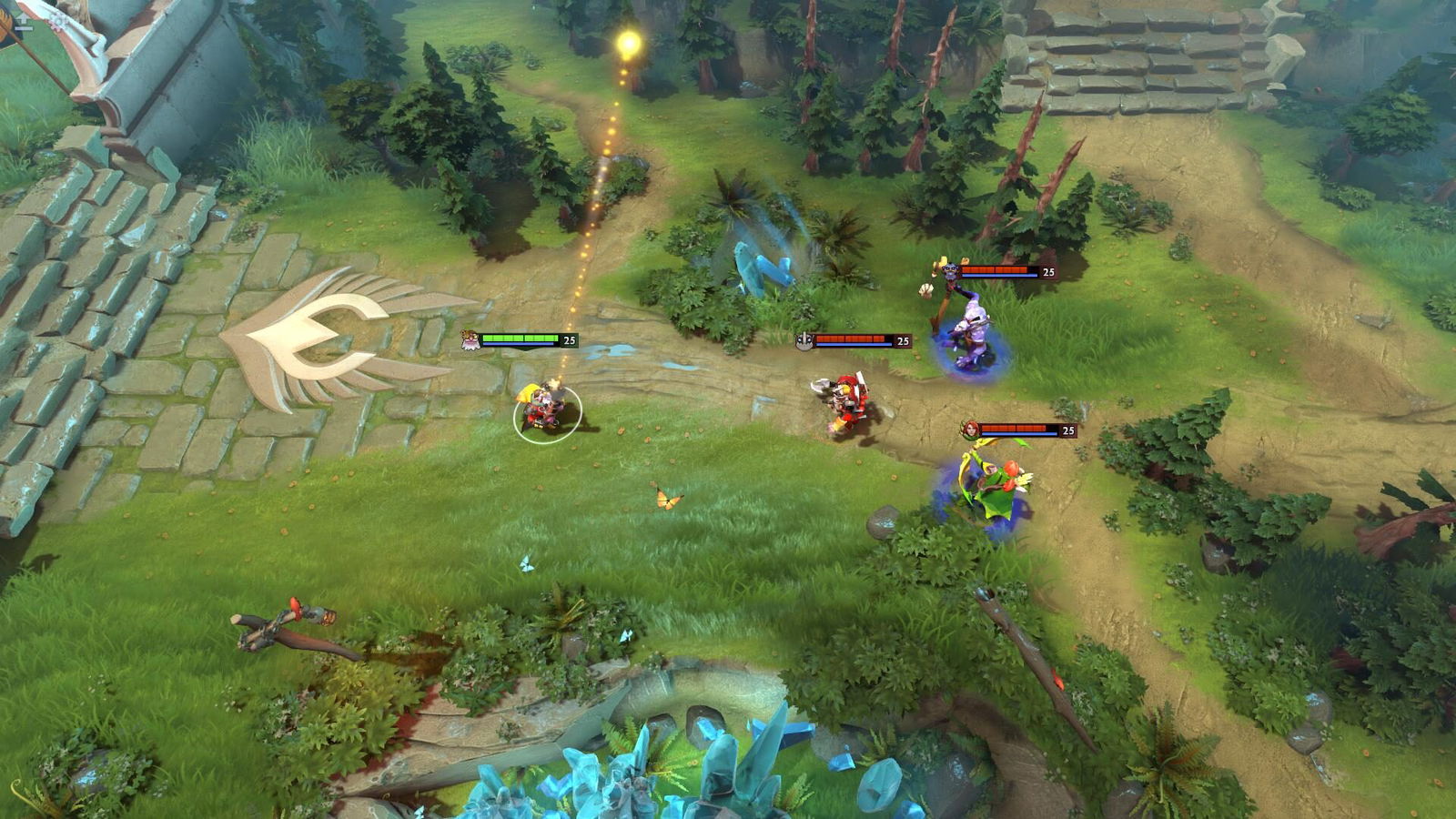Dota 2 stands as one of the most complex and rewarding games in the MOBA (Multiplayer Online Battle Arena) genre, but for newcomers, the sheer depth of statistical information can feel overwhelming. As explained on gocore, understanding how to read and interpret Dota 2 stats goes beyond improving your own gameplay and extends to appreciating the strategic depth that has made this game a cornerstone of competitive esports for over a decade.
The Foundation: What Is Dota 2?
At its core, Dota 2 is a team-based strategy game where two teams of five players each control unique heroes with distinct abilities. The primary objective appears deceptively simple: destroy the enemy’s Ancient, a heavily fortified structure at the heart of their base. However, achieving this goal requires coordinating with teammates, managing resources, controlling map objectives, and making split-second tactical decisions that can determine the outcome of matches lasting anywhere from 20 minutes to over an hour.
Each hero fills specific roles. Carries become increasingly powerful as the game progresses, supports enable their teammates through healing and utility, and initiators start team fights. The interplay between these roles creates a dynamic ecosystem where every statistic tells a story about team strategy and individual performance.
Decoding Essential Dota 2 Statistics
Kills, Deaths, and Assists (KDA): The most visible statistics in any match, KDA ratios provide a snapshot of a player’s impact in team fights. However, these numbers require context. A support player with fewer kills but high assists often contributes more to victory than a carry with impressive kills but poor positioning that leads to crucial deaths.
Gold Per Minute (GPM) and Experience Per Minute (XPM): These efficiency metrics reveal how effectively players farm resources and gain levels. High GPM indicates successful last-hitting, objective control, and kill participation. XPM shows consistent experience gain through creep kills, hero kills, and strategic positioning. Together, they illustrate a player’s ability to stay relevant as matches progress.
Last Hits and Denies: Fundamental farming statistics that separate casual players from serious competitors. Last hits represent successful creep kills that provide gold, while denies prevent enemies from gaining experience and gold from their own creeps. Elite players consistently achieve 8-10 last hits per minute in favourable conditions.
Damage Statistics: Hero damage, tower damage, and healing provide insights into different aspects of contribution. High hero damage might indicate aggressive positioning and successful team fight participation, while significant tower damage suggests objective-focused gameplay that directly contributes to victory conditions.

The Professional Stage: Tournament Analysis
Dota 2‘s competitive scene reaches its pinnacle with The International, an annual championship that helped establish the modern esports landscape. When The International debuted in 2011 with a groundbreaking $1.6 million prize pool, it demonstrated that competitive gaming could achieve mainstream recognition and financial legitimacy. The tournament’s crowdfunding model through battle passes has since pushed prize pools beyond $40 million, making it one of the most lucrative events in all of sports.
The International and other major tournaments like the Dota Pro Circuit showcase the highest level of statistical optimization. Professional teams analyze thousands of data points, from draft win rates and hero matchup statistics to ward placement patterns and objective timing windows. These tournaments have elevated statistical analysis from casual interest to scientific precision.
Reading Professional Match Statistics
Draft Analysis: Pick and ban phases in professional matches reveal strategic priorities through win rate statistics. Teams study which heroes perform well together (synergy) and which heroes counter specific strategies (anti-synergy). Draft statistics often predict match outcomes before a single creep has spawned.
Economic Trends: Professional matches showcase efficient resource allocation through gold distribution charts and net worth leads over time. Teams that maintain economic advantages while controlling map objectives typically convert statistical leads into tournament victories.
Objective Control: Roshan kills, tower destruction timing, and map control statistics demonstrate how professional teams translate individual skill into coordinated strategic execution. These macro-game statistics often prove more predictive of success than individual player statistics.
Building Your Statistical Understanding
For players looking to improve their own gameplay, focusing on specific statistical improvements can accelerate skill development. Concentrating on efficiency metrics like GPM and last hit accuracy provides better results than obsessing over KDA ratios. These foundational skills translate directly into better match performance regardless of hero choice or team composition.
Watching professional matches with statistical overlays helps newcomers understand how elite players optimize their decision-making. Many tournament broadcasts now include real-time statistical analysis that explains why certain plays succeed or fail based on numerical advantages and disadvantages.
Advanced Statistical Concepts
As your understanding develops, consider exploring more sophisticated metrics like damage efficiency (damage dealt relative to gold invested), support impact ratings (successful ward placements, ally saves, and objective contributions), and positional heat maps that show optimal hero positioning throughout different game phases.
The Path Forward
Mastering Dota 2 statistics transforms the viewing experience from casual entertainment into strategic education. Whether you’re analyzing your own replays to identify improvement areas or following professional tournaments to understand meta developments, statistical literacy enhances every aspect of engagement with the game.
The complexity that initially seems daunting becomes the source of endless depth and discovery. Every match generates hundreds of data points that tell stories about decision-making, team coordination, and strategic adaptation. As you develop fluency with these numbers, you’ll find yourself appreciating both the spectacular plays that make highlight reels and the subtle statistical advantages that separate good teams from championship-calibre organizations.
The journey from statistical confusion to analytical clarity mirrors the broader path of mastering Dota 2 itself. Patience, practice, and persistent learning eventually transform complexity into understanding, and understanding into genuine appreciation for one of competitive gaming’s most demanding and rewarding experiences.



